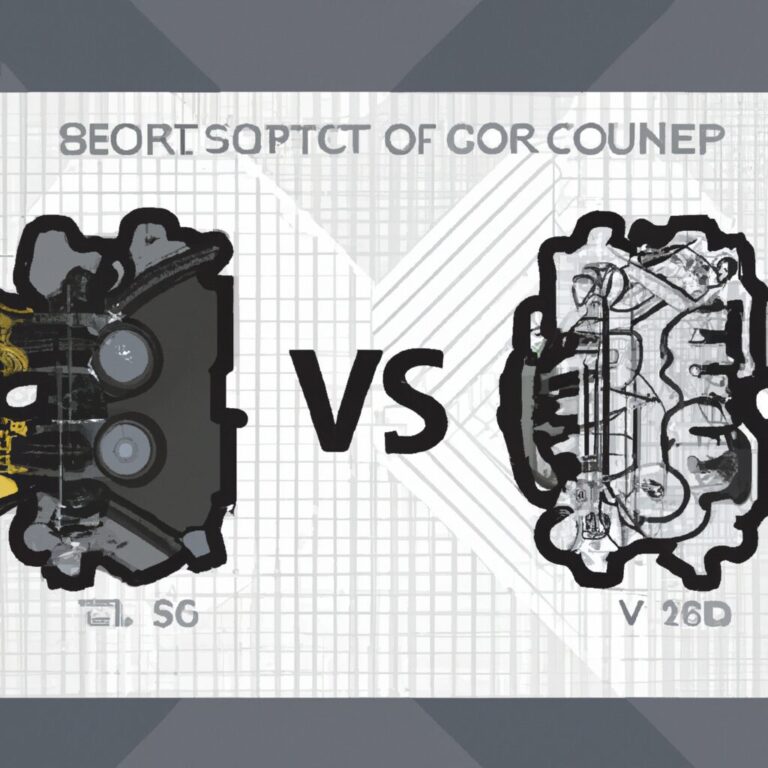5 Best Tips for Starter Motor Repair Mistakes
The 5 best tips for starter motor repair mistakes are: diagnose the exact problem, use high-quality replacement parts, follow the correct installation procedure, avoid common mistakes, and regularly maintain the motor. Fixing starter motor issues requires careful diagnosis of the problem, such as identifying faulty wiring or a worn-out solenoid.
Using genuine, high-quality replacement parts ensures a reliable repair. Following the correct installation procedure is crucial to avoid any further damage. Additionally, avoiding common mistakes like cross-threading bolts or over-tightening connections is important. Lastly, regular maintenance, such as cleaning and lubricating the motor, helps prevent future problems.
By following these tips, beginners can successfully repair starter motor issues and ensure the motor’s longevity.
Choosing The Right Tools
Investing In Quality Tools
Quality tools contribute to the durability of your starter motor repair efforts.
Invest in reliable brands to ensure your tools last long.
- Quality tools offer precision and efficiency.
- Avoid cheap alternatives to prevent damage.
Understanding Tool Requirements
Knowing the correct tools needed can streamline your repair process.
Refer to the manufacturer’s guidelines for tool specifications.
- Each tool plays a crucial role in the repair process.
- Understanding tool functions avoids mistakes.

Credit: crochetcoach.com
Diagnostic Techniques
For the best starter motor repair, ensure to use diagnostic techniques like testing the battery, inspecting the connections, and checking for damaged wires. Perform thorough troubleshooting to determine the root cause of the issue and avoid common pitfalls. With the right diagnostic approach, you can effectively address starter motor problems and prevent costly mistakes.
When it comes to starter motor repair, accurate diagnostics are essential in order to identify and fix common issues effectively. By utilizing various diagnostic techniques, you can save time, money, and frustration. In this section, we will explore two key diagnostic techniques – Identifying Common Issues and Using Diagnostic Equipment – that will help you troubleshoot starter motor problems with precision.
Identifying Common Issues
Identifying common issues is the first step in diagnosing starter motor problems. By having a solid understanding of these issues, you can quickly narrow down the root cause of the problem. Here are a few common issues to watch out for:
- Weak or Dead Battery: A weak or dead battery can prevent the starter motor from receiving enough power to start the engine. Check the battery voltage and connections to ensure they are in good condition.
- Corroded Terminals: Corroded terminals can hinder the flow of electricity, causing the starter to malfunction. Clean the terminals and apply a corrosion inhibitor to prevent future corrosion.
- Defective Solenoid: The solenoid is responsible for engaging the starter motor. If it is defective, the motor may not receive the necessary power. A clicking sound when turning the key is often a sign of a faulty solenoid.
- Worn-out Starter Motor: Over time, the starter motor can wear out due to continuous use. Excessive noises or slow cranking are indications of a worn-out motor.
Using Diagnostic Equipment
Diagnostic equipment can greatly simplify the troubleshooting process by providing accurate readings and pinpointing the exact issue. Whether you are a DIY enthusiast or a professional mechanic, having the right tools can make a significant difference. Here are some diagnostic equipment options for starter motor repair:
- Multi-meter: A multi-meter is an essential tool for testing battery voltage, continuity, and resistance. It can help you determine if the battery, solenoid, or motor is faulty.
- Starter Motor Tester: This specialized tool puts the starter motor under load conditions, allowing you to monitor its performance and identify any weaknesses or malfunctions.
- Scan Tool: If your vehicle has an electronic control unit (ECU), a scan tool can retrieve diagnostic trouble codes (DTCs) and provide valuable information about the starter motor system.
- Wire Piercing Probe: This tool enables you to test the voltage at various points in the electrical system without damaging the wires or connectors.
By utilizing diagnostic techniques such as identifying common issues and using diagnostic equipment, you can effectively diagnose and repair starter motor problems. Remember, accurate diagnostics are crucial for a successful repair, ensuring your vehicle starts reliably every time.
Safety Precautions
Prioritize safety precautions when performing starter motor repair to avoid common mistakes. Always disconnect the battery, wear protective gear, follow manufacturer instructions, double-check connections, and test the repair thoroughly before reassembling. Proper safety measures can prevent accidents and ensure a successful repair job.
Understanding Electrical Hazards
When it comes to working with starter motor repairs, it is crucial to have a good understanding of electrical hazards. It is important to recognize that starter motors involve high voltage electricity, which can pose serious risks if mishandled. By being aware of the potential dangers, you can take the necessary precautions to keep yourself and others safe.
- Never touch any electrical parts without proper insulation or protective gear.
- Avoid working on the starter motor if you are unsure of how to handle the electrical connections.
- If you are unsure about any electrical component, consult a professional before proceeding further.
Using Protective Gear
Protective gear plays a vital role in ensuring your safety during starter motor repair tasks. By protecting yourself from potential hazards, you can minimize the potential for injury or accidents. Below are some important protective gear items to consider:
- Gloves: Wear insulated gloves that provide protection against electrical shocks and burns.
- Goggles: Protect your eyes with safety goggles to prevent any debris or sparks from causing harm.
- Protective Clothing: Wear long-sleeved shirts and pants made of non-conductive material to reduce the risk of electrical contact.
- Footwear: Use safety boots or shoes with rubber soles to prevent electric shock.
Safe Working Environment
To ensure your safety while performing starter motor repairs, it is vital to work in a safe environment. By following these guidelines, you can minimize the risk of accidents or injuries:
- Always work in a well-ventilated area to avoid inhaling any fumes or gases.
- Clear the work area of any clutter or obstructions that could cause tripping or falling.
- Ensure there is adequate lighting to see clearly and prevent mistakes.
- Keep flammable materials away from the work area to prevent fire hazards.
Proper Tools And Equipment
Using the right tools and equipment is essential when it comes to starter motor repair. Having the proper tools not only ensures the job is done correctly but also contributes to your safety. Here are a few crucial tools to include in your repair kit:
- Multimeter: Use a multimeter to check electrical connections and ensure proper functioning.
- Insulated Screwdrivers: Insulated screwdrivers prevent electric shock when working on electrical components.
- Wire Strippers: Wire strippers help you safely remove insulation from wires without damaging them.
- Insulating Tape: Have a reliable insulating tape to secure and protect electrical connections.
Regular Training And Knowledge Enhancement
Starter motor repair is a task that requires continuous learning and keeping up-to-date with the latest industry standards and practices. By regularly updating your knowledge and skills, you can ensure you are aware of any new safety measures and techniques. Below are a few ways you can achieve this:
- Participate in workshops or seminars related to starter motor repair and safety precautions.
- Read books, manuals, or online resources that provide valuable insights into safe repair practices.
- Subscribe to industry newsletters or join online forums to stay informed about new safety guidelines.

Credit: m.youtube.com
Troubleshooting Procedures
In the realm of troubleshooting procedures, avoid these common repair mistakes for starter motors with these top 5 tips. Ensure a smooth repair process and keep your motor running smoothly.
Following Service Manuals
Consult your vehicle’s service manual for specific instructions to troubleshoot a starter motor issue. The manual provides valuable insight into unique requirements for your vehicle model.
Testing For Voltage And Resistance
Use a multimeter to test voltage and resistance on the starter motor to pinpoint any potential issues accurately.
Professional Help
Professional help is essential when dealing with starter motor repairs. Knowing when to seek assistance and finding reliable repair services plays a crucial role in ensuring the effective repair of starter motor issues. Seeking professional help when encountering complex problems with your starter motor can save you time and prevent further damage.
Knowing When To Seek Assistance
It’s important to recognize the signs that indicate when professional help is necessary. If you encounter persistent issues with your starter motor, such as slow cranking, grinding noises, or frequent stalling, it’s best to seek assistance from a qualified mechanic. Ignoring these warning signs can lead to more severe problems and potential safety hazards.
Finding Reliable Repair Services
When searching for repair services for your starter motor, prioritize reliability. Look for reputable auto repair shops with experienced technicians who specialize in starter motor repairs. Consider reading customer reviews and asking for recommendations from trusted sources to ensure that you choose a reliable service provider.

Credit: www.capitalone.com
Frequently Asked Questions For 5 Best Tips For Starter Motor Repair Mistakes
What Is The Most Common Cause Of Starter Motor Failure?
The most common cause of starter motor failure is wear and tear over time. Due to constant use, the internal components of the motor can become worn, causing it to malfunction. Regular maintenance and replacing worn parts can help prevent starter motor failure.
What Burns Out A Starter Motor?
Frequent overheating and overuse can quickly wear out a starter motor. Excessive strain and physical damage are also common causes.
How Do You Get A Faulty Starter Motor To Work?
To get a faulty starter motor to work, try tapping it gently with a hammer. Check the battery connections and ensure they are clean and tight. If the issue persists, consider getting the starter motor repaired or replaced by a mechanic.
How Do You Start A Car With A Bad Starter Solenoid?
To start a car with a bad starter solenoid, try tapping it with a hard object and then attempting to start the vehicle. If that doesn’t work, engage the ignition switch while simultaneously touching the starter with a screwdriver to bypass the solenoid.
Conclusion
In essence, avoiding common starter motor repair mistakes is key for smooth vehicle operation. Remember these 5 tips to save time, money, and frustration. Stay vigilant, follow best practices, and your car will thank you with reliable performance. Prioritize maintenance for a seamless driving experience.

